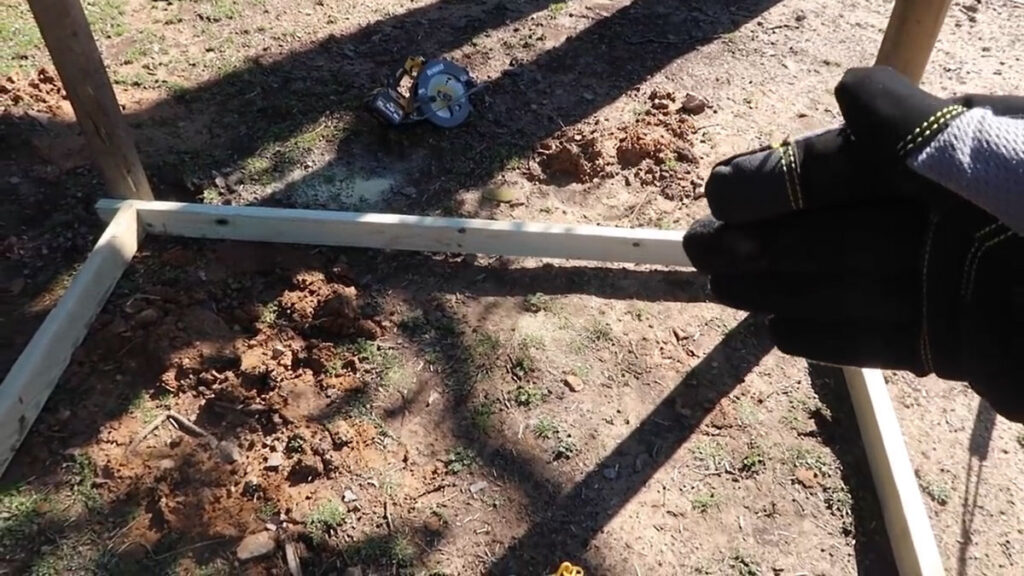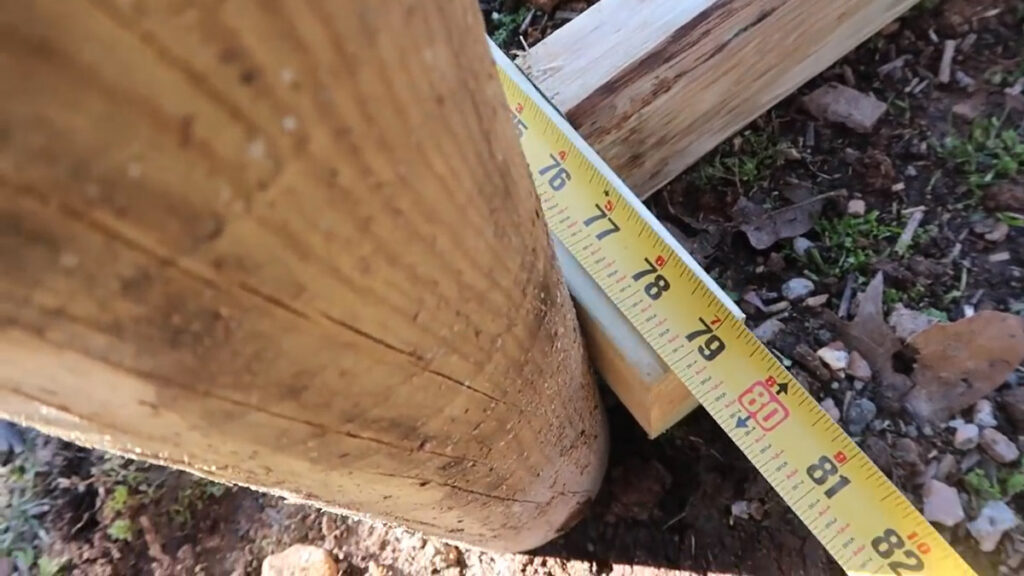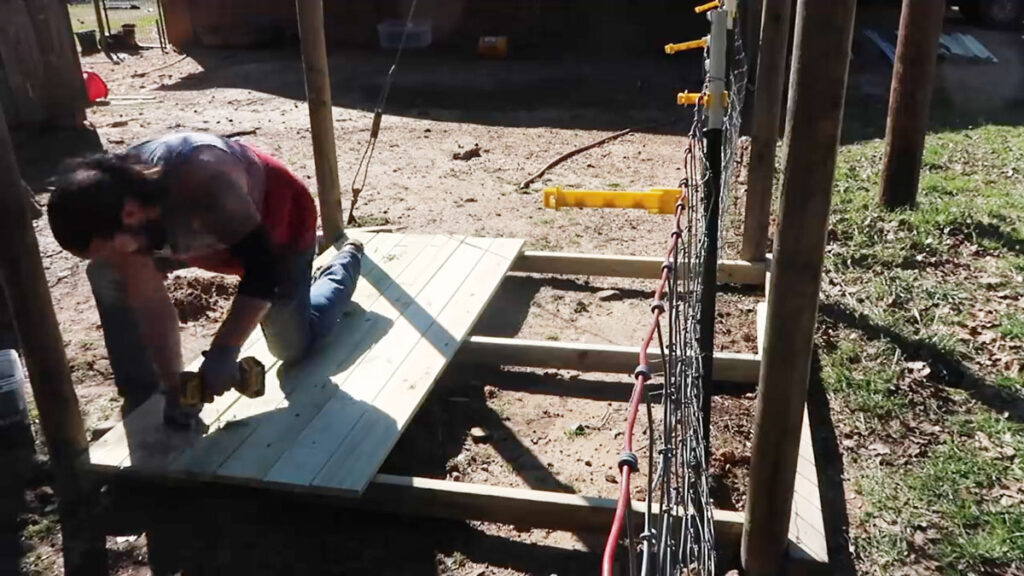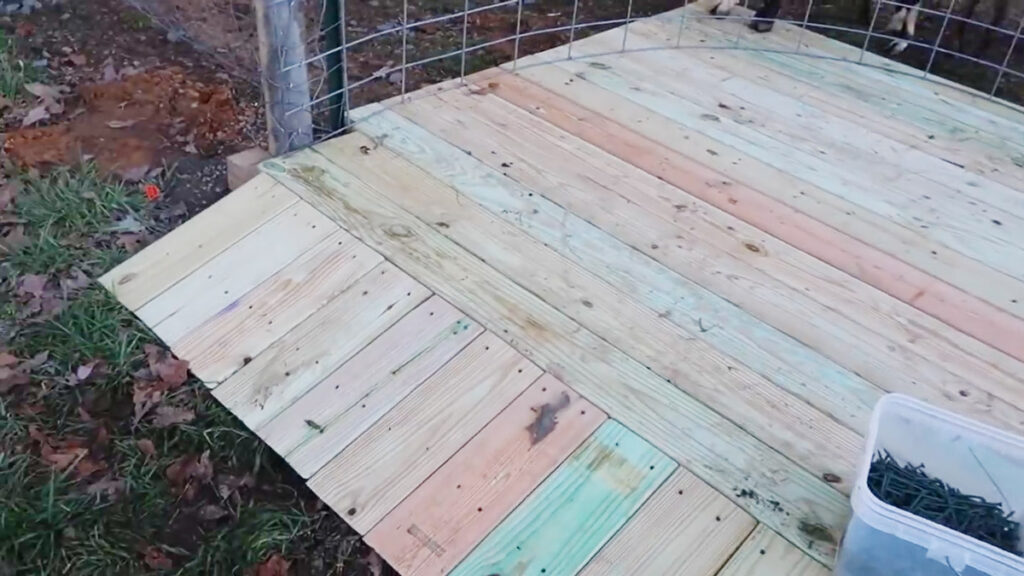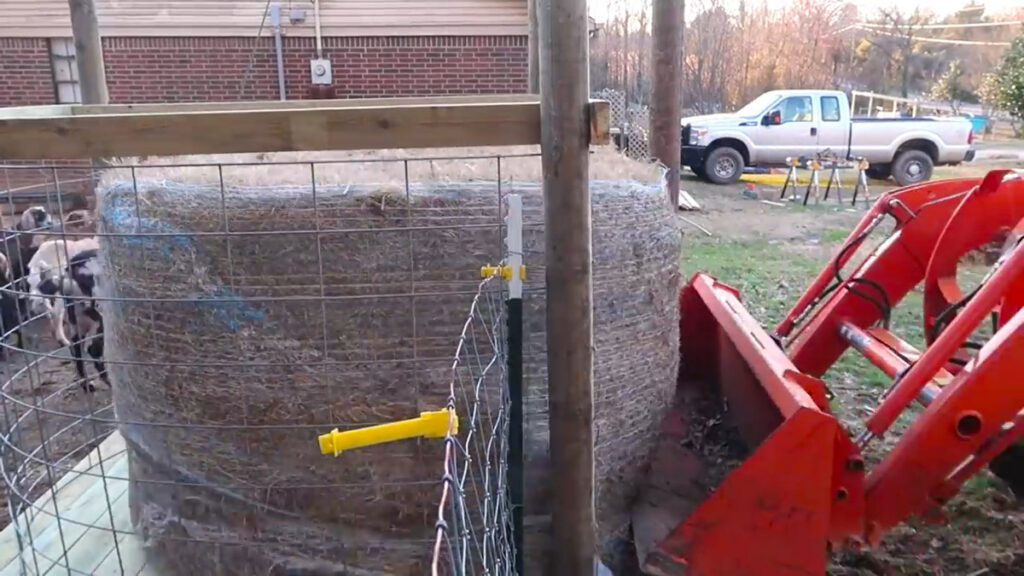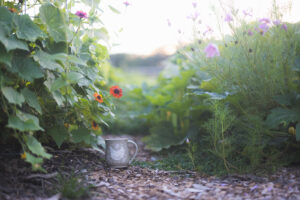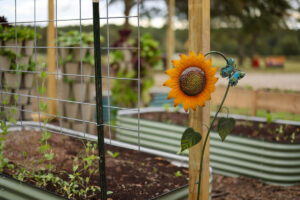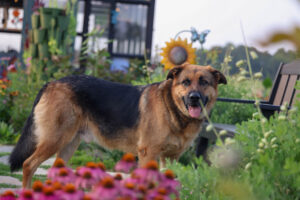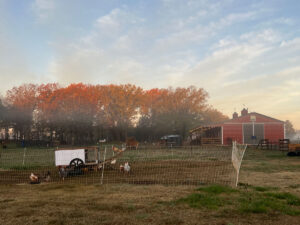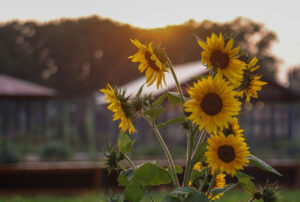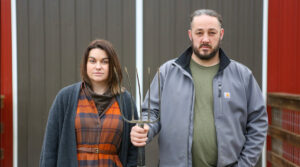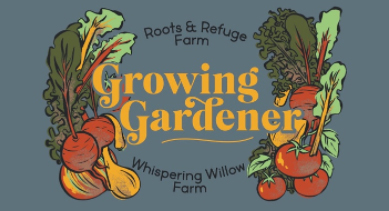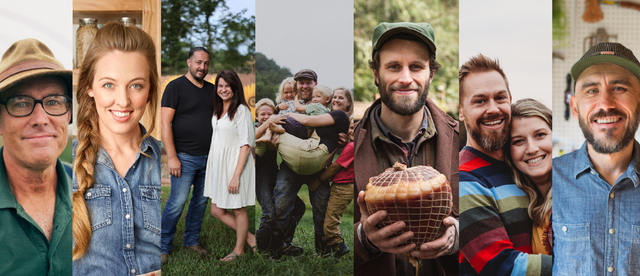It is important to keep each hay bale fresh and dry from field to barn to reduce loss, optimize your feed price ratio, and keep your animals healthy. Hay that is allowed to get wet can add up to a lot of forage losses. But how can you keep hay dry when you don't have a barn? Build this DIY structure to shed the water.
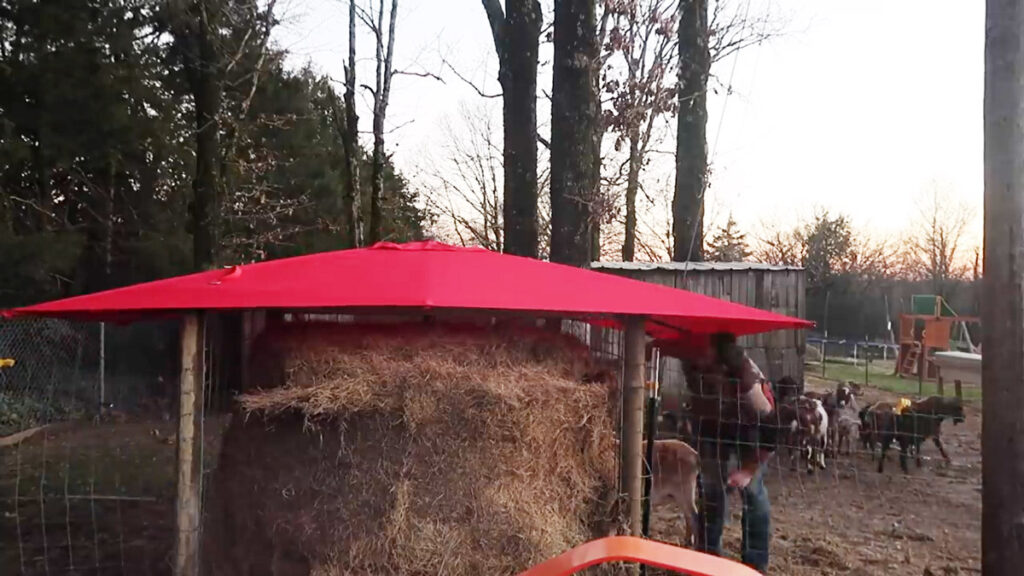
Why Does Hay Need to be Kept Dry?
It is always important to keep your hay and feed dry to protect your animals' health and reduce costs by lowering forage losses.
In the wet season, we started having problems with our feed hay molding before our goats could eat all of it. The moldy hay got a couple of our goat kids sick. Any feeding hay that gets wet or moldy needs to be thrown out immediately.
We didn't want to buy our hay in smaller quantities because we saved money by buying them in huge bales. But we needed to address the problem right away to keep all of our animals safe and healthy.
To solve the problem, we built this simple structure in our feeding area and named it the “Hay-Keeper-Dryer”. Okay, the name needs some work, but the structure does exactly what the name suggests.
Pro Tip: Stacking bales with a moisture content over 20% can be dangerous because they may catch fire.
Tips to Minimize Forage Losses
Here are a few tips to reduce wasted hay:
- Store hay bales off of the ground – Ground moisture and run-off will soak up into hay bales stored directly on the ground causing mold from the bottom layer up. Storing hay off the ground prevents storage losses. If you don't have a barn, store hay on wooden pallets and cover them with a tarp.
- Keep hay covered – Storing your hay in a covered place protects your hay supply from rain.
- Keep feed hay dry outside during feeding – Don't just plan to keep hay dry while in the hay storage area, but during feeding too. This step is more commonly overlooked. Try to feed your animals in a covered area when possible.
- Improve feeding methods – Look for ways to eliminate things like feed spillage and trampled hay. This small structure made big improvements in time efficiency and waste reduction.
It is important to keep all your animal feed dry, not just hay. For more feed storage solutions plus some tips on buying bulk, here's a post on how we feed our farm and keep costs down.
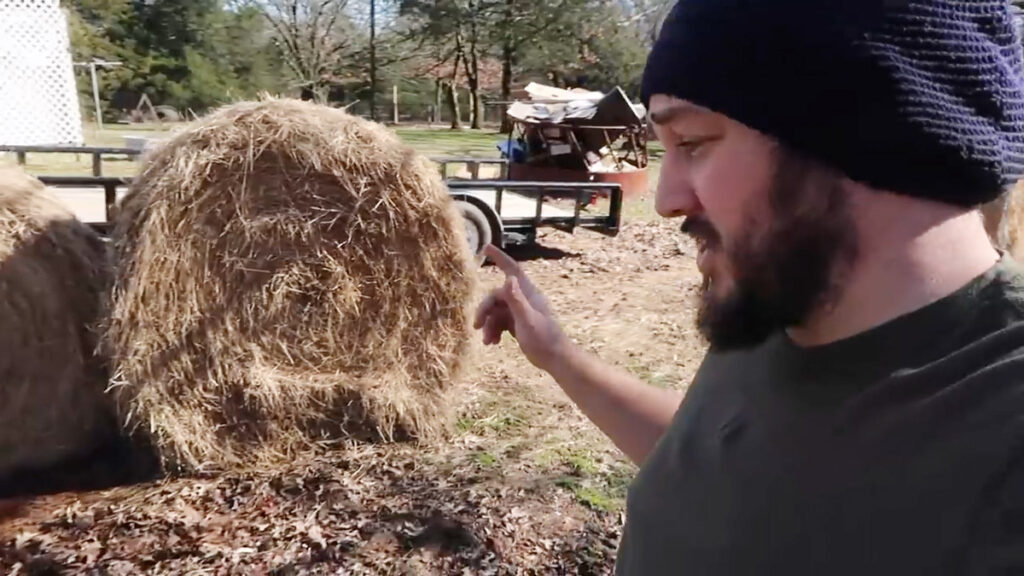
How to Keep Feed Costs Down
Besides preventing hay loss, as we discussed above, buying in bulk can also keep feed costs down.
To stay cost-effective, we like to feed large round bales to our goat herd. It saves us a lot of time and money in the long run.
At the time of this filming (2019), small square bales cost about $8.25/bale and we needed to have 30 of them to feed our goats for a month. That is $247.50 per month for hay.
An 800 lb. 5-foot round bale was about $40/bale. Two of these last over a month for our goats which brings the monthly cost down to under $80. You can see how even that's a huge cost savings.
Instead, we purchased really high quality 1,300 lb. large round bales for $60/bale and only needed to feed one per month. Not only do the goats go through the high-quality hay a lot slower, but they also look the best and are the most healthy when they are eating it.
As you can see, the savings and benefits really added up fast. Feeding rectangular bales is not only more time-consuming but significantly more expensive.
But, we didn't own a tractor capable of picking up those large bales so we needed a creative solution. Read on to see how the “Hay-Keeper-Dryer” solved that dilemma too.
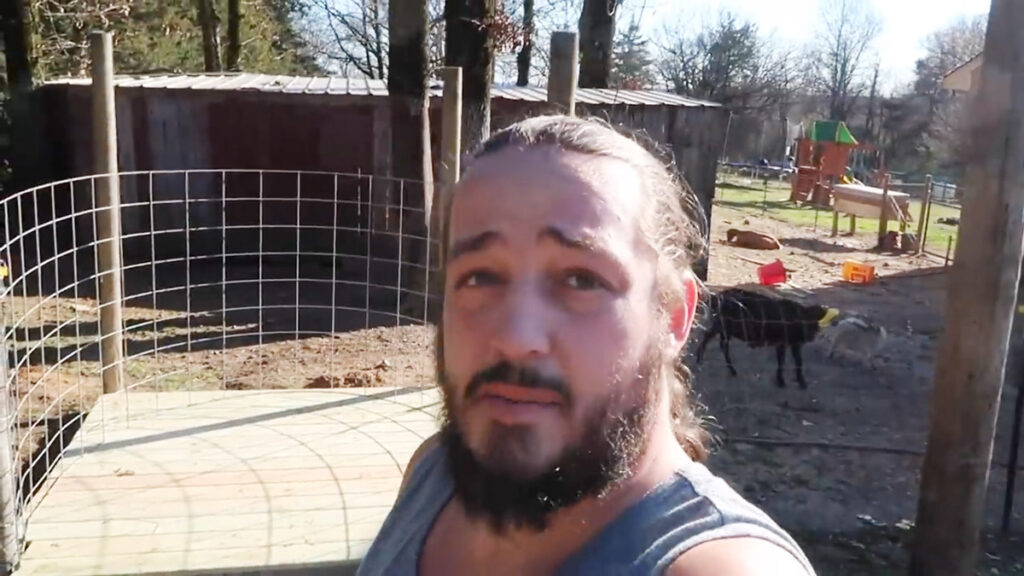
How to Build a Structure to Keep Feed Hay Dry Outside
We love to share projects that almost anyone can easily do, but this project does require more building skills than most of our others.
I encourage you not to be intimidated. You might be surprised what you can do if you just try.
We are going to build a platform just large enough for a round bale set on end with a small ramp going up to it. The ramp allows us to push the hay bale into place without any equipment to lift the bale onto the platform.
I positioned my structure at the edge of the goat pen, jutting into the pen so that the goats could get to the hay, but I could also push the bales onto the platform without going into the pen.
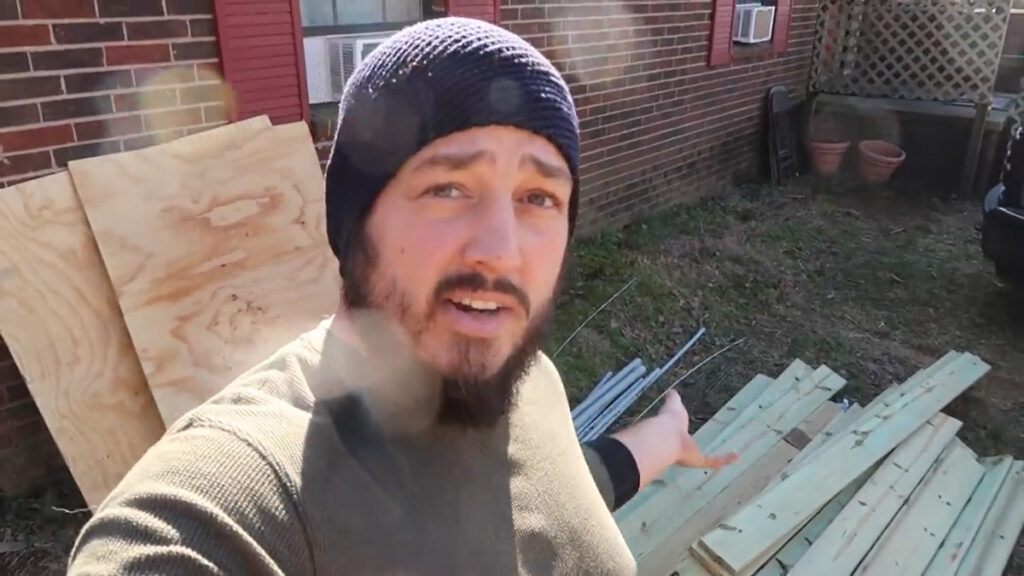
Supplies Needed
- Four 4″ Treated Fence Posts – These will be for the corners of the structure and need to be about 8′ long. 4x4s would also work, but since we didn't have any, we utilized what we already had on the farm.
- Concrete – 80 lb. Quikrete bags worked great.
- Eight 2x4s – You will need these for the platform base and the top bracing.
- One 4×4 – This will go on the ground under the ramp. A treated 4×4 will last longer but is not necessary.
- 5/8″ Treated Deck Planking – We found this lumber on clearance. You don't have to get the exact same thing, you just need enough sturdy boards to build the deck of the structure.
- Deckmate exterior 3″ coated screw – (or favorite deck screws of your choice) I like to use screws because they hold longer and have a higher breaking point than nails. These are my favorite screws to use, even though they are a bit more expensive because they last longer and work better.
- One 16′ Long Cattle Panel – Cattle panels have holes large enough for my goats to put their heads through to access the hay when they eat, but small enough that the goats can't get through.
- 1 1/2″ Fencing Staples – You'll need enough to secure the cattle panel to the posts.
- Four Heavy Duty Black Bungee Cords – These bungee cords are used to hold the giant umbrella in place.
- One Giant Umbrella – We used a giant umbrella because it was much cheaper than building a roof.
- Two self-tapping screws – If you cut the umbrella pole off, use the self-tapping screws to hold it open.
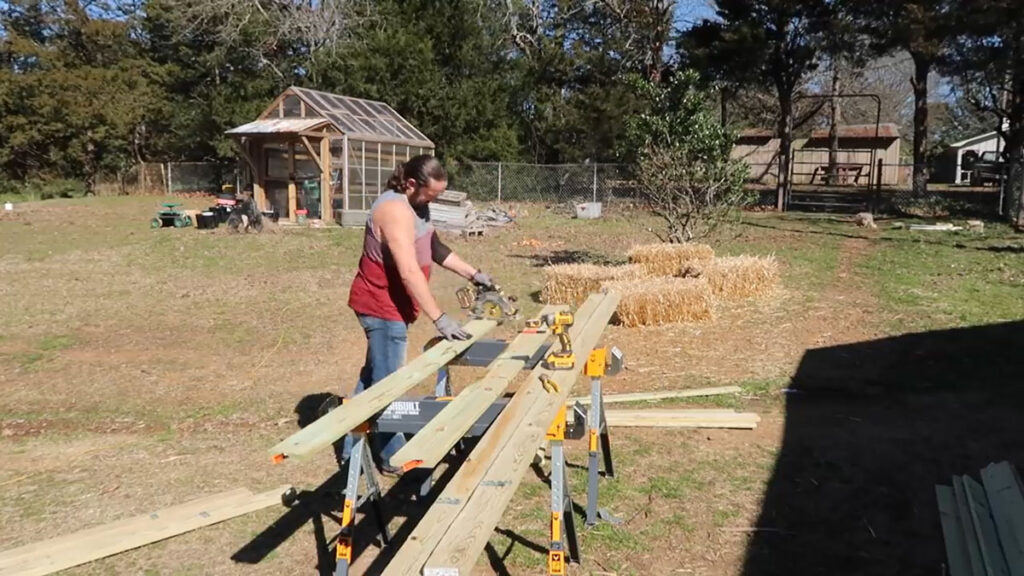
Tools Needed
- Posthole Digger – to dig holes for the corner posts. You can use a shovel if you don't have a posthole digger.
- Wood Saw – you will need something to cut your 2x4s, 4×4, and deck boards with. A skill saw, miter saw, or even a hand saw would work.
- Drill – a drill with a bit that fits the screws you will be using.
- Hammer – to hammer in the fencing staples
- Tape Measure – for measuring the wood before cutting
- Hacksaw – or other tool designed to cut metal tubing
Steps to Building a Dry Hay Feeding Area
- Dig holes for the four corners of the structure 5 1/2 feet apart. These will need to be large enough and deep enough to set the posts in concrete. It does not need to be perfectly square, just try to get it close by measuring.
- Concrete the posts squarely in the holes.
- Let the concrete set. It's a good idea to wait until the next day before finishing the project.
- Build a square base for the platform with your fence posts as the corners. Cut three 2x4s to length and screw them to the insides of your fence posts (narrow side on the ground) to form the two sides and the back of the base. Keep the scrap pieces of decking boards to use later for the ramp.
- Cut the 4×4 to length and attach it to the FRONT side of your upright fence posts to form the front of the square platform base.
- Use the remaining 2×4 as a brace in the middle of the platform base. Cut the 2×4 to fit lengthwise between the 4×4 and back 2×4 and screw in place. This prevents the decking from bowing or sagging under the weight of these heavy round bales.
- Cut deck planking to length and screw it down to the platform base to create a platform deck.
- Put the cattle panel on the platform and bend it into a U-shape from one front post to the other. Secure the cattle panel with fencing staples to the posts and the decking.
- Secure pen fencing to front posts with fencing staples if desired.
- Build a ramp on the front side of the platform. The bottom side (on the ground) is cut at a 45-degree angle so that hay bales don't catch on it when loading the bale onto the platform.
- Add 2x4s over the cattle panel from post to post as bracing.
- Cut the tops of the corner fence posts off at the top of the 2×4 braces.
- Prepare the giant umbrella. (You could alternatively do a conventional framing job and add a roof to the structure now instead.) Cut the pole off of the umbrella. Use two self-tapping screws to lock the umbrella open.
- Push the bale on end up onto the platform. If your bale is net wrapped, cut off the net.
- Cover the bale with the umbrella and secure it with the bungee cords to the structure.
And now you have yourself an inexpensive DIY structure to help keep your hay bales dry. This is a fantastic project for anyone without a barn that still wants to be able to buy hay in bulk and save money on feed costs.

